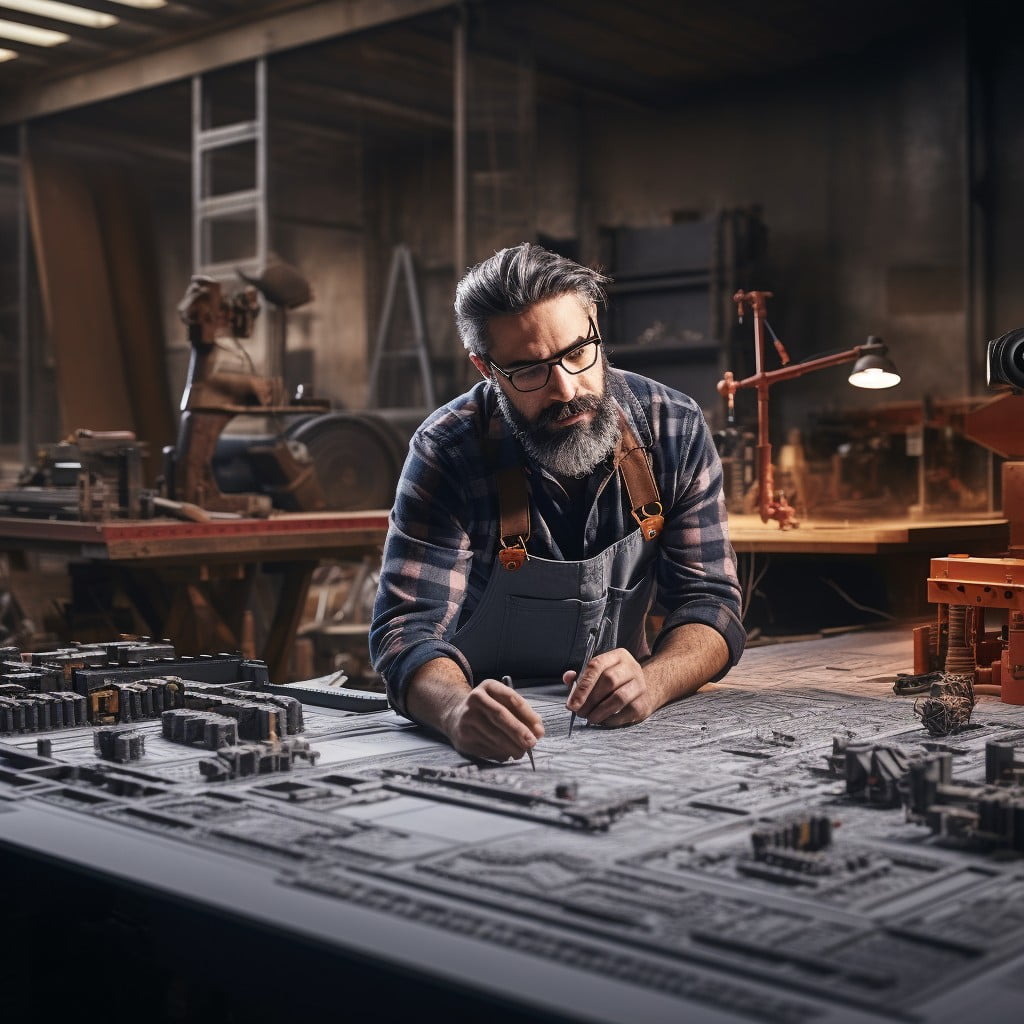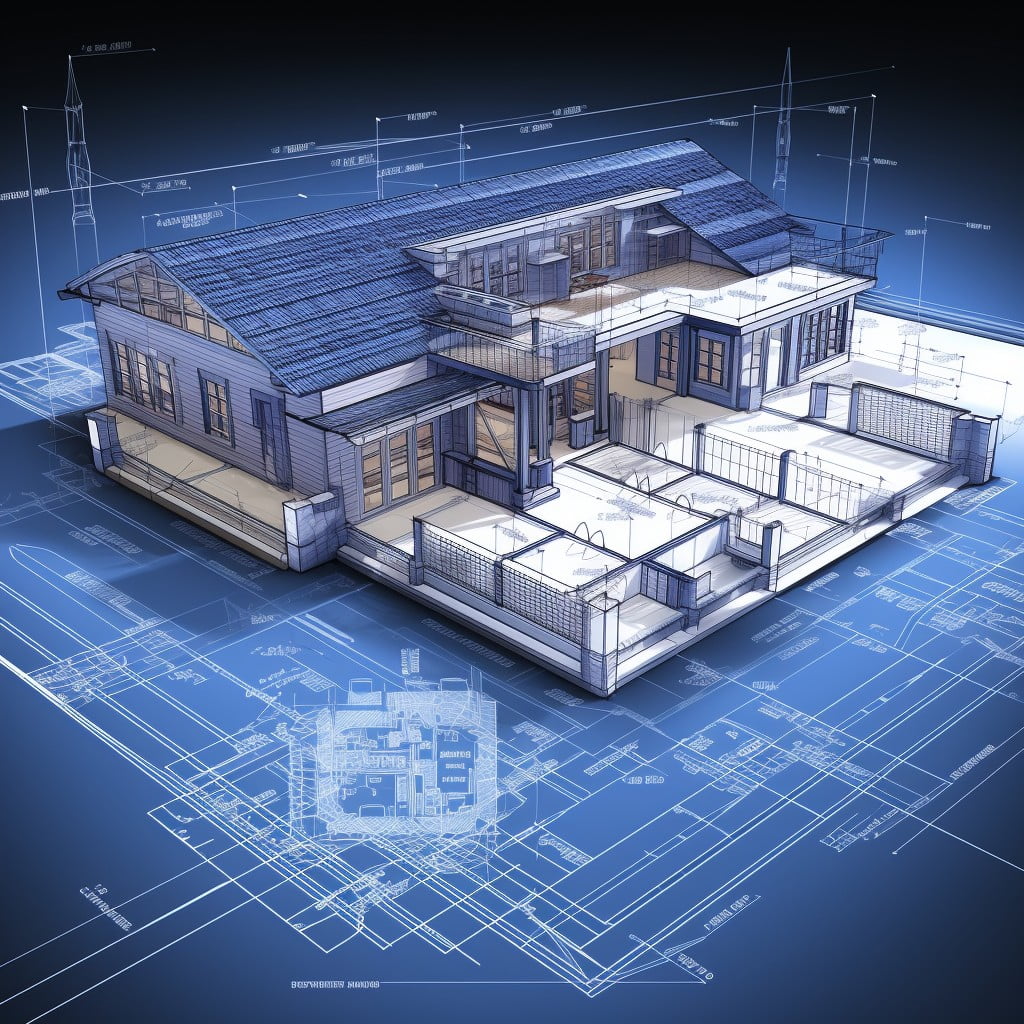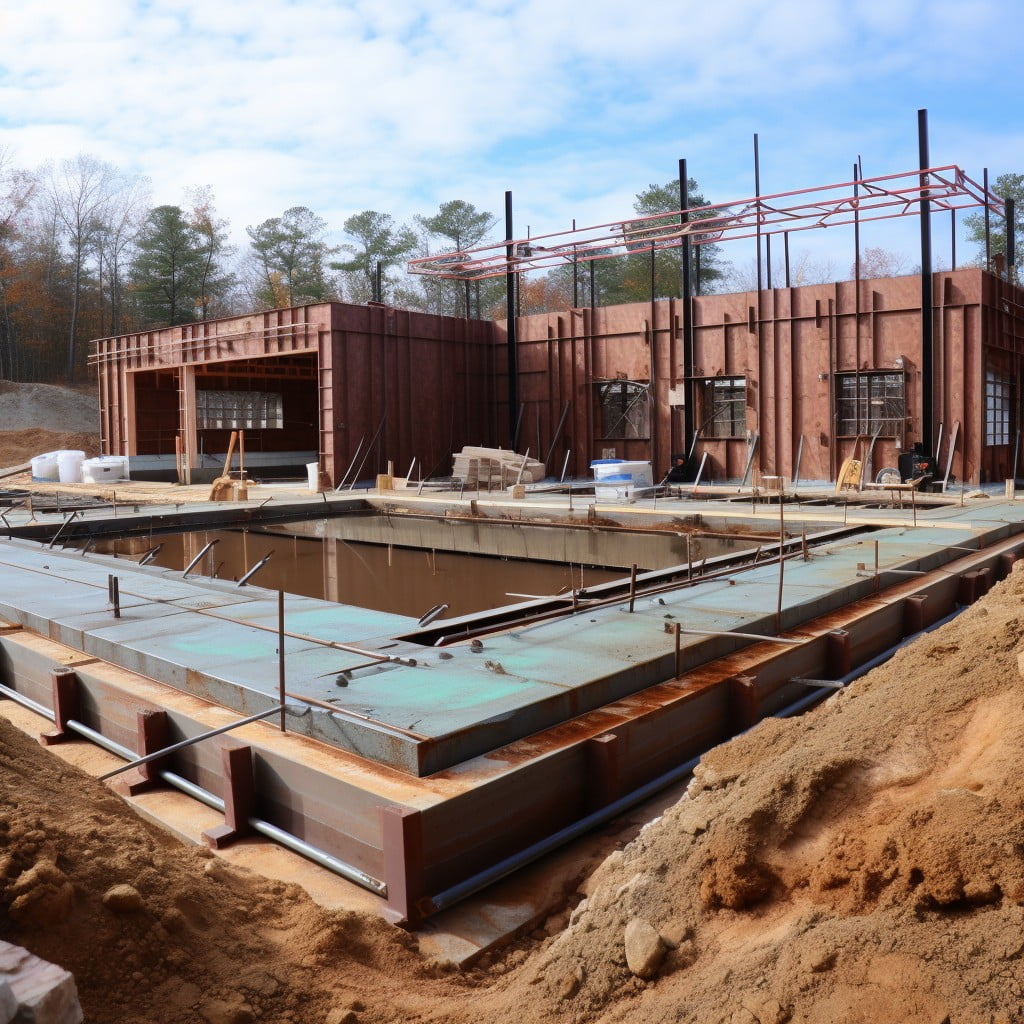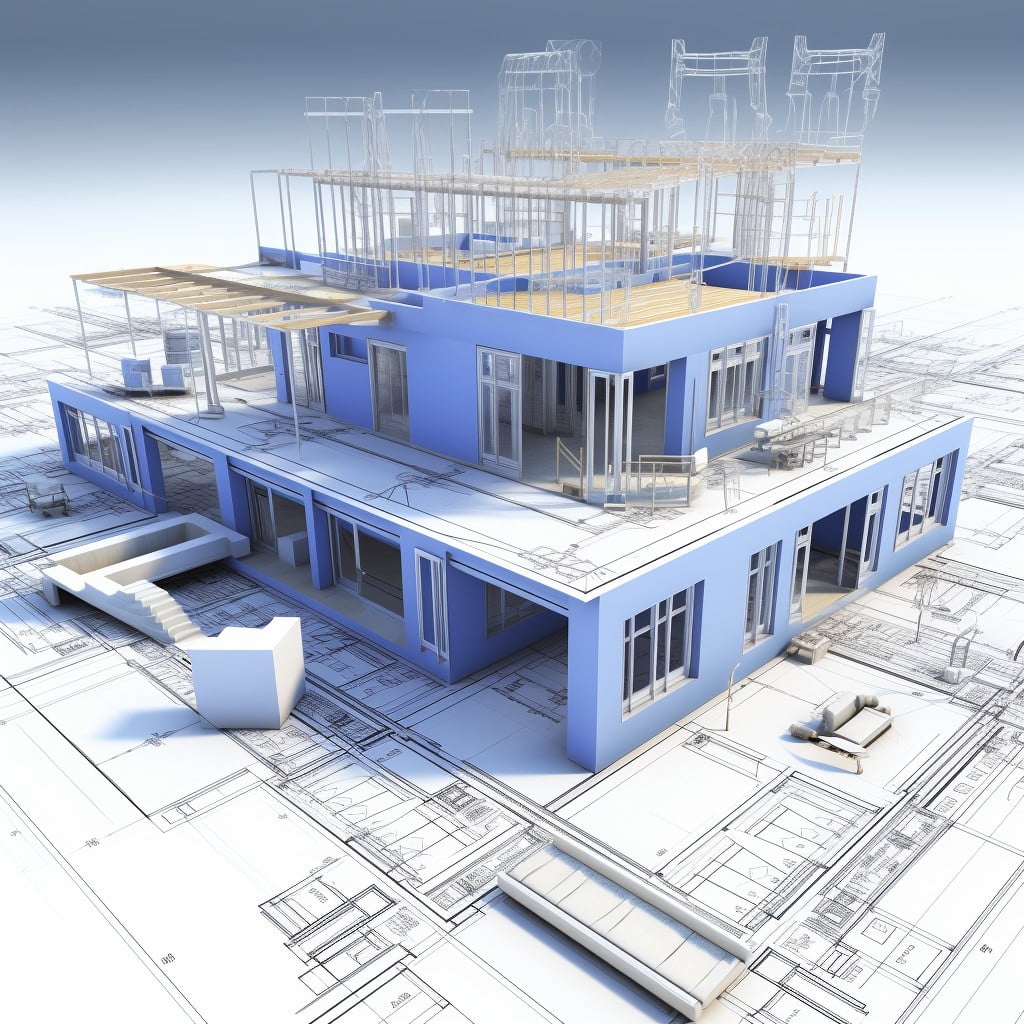Discover the essential steps to construct a sturdy and reliable foundation for your metal building.
Building a solid foundation is a crucial step in constructing a metal building, as it ensures the structure’s stability and longevity. This process involves several steps, including site selection, soil testing, excavation, formwork, pouring concrete, and curing.
Each of these steps plays a vital role in creating a durable and stable base for your metal building. This article will guide you through the entire process, providing detailed instructions and essential tips to help you construct a reliable foundation for your metal building.
So whether you’re a seasoned builder or a DIY enthusiast, this comprehensive guide will equip you with the knowledge you need to lay a foundation that stands the test of time.
Key takeaways:
- Determining Responsibility for Metal Building Foundation Design: Appoint the right professionals.
- Understanding the Metal Building Foundation Design Process: Geotechnical study, load assessment, foundation type selection, design development, anchor bolt placement.
- Considering Key Factors Affecting Metal Building Foundation Design: Weight of structure, soil type, weather conditions.
- Exploring Options for Metal Building Foundations: Slab, pier, concrete mat, deep pier.
- Unpacking the Importance of Foundation Plans for Metal Buildings: Precise measurements, structural elements, grading and drainage.
Determining Responsibility for Metal Building Foundation Design

Identifying who is responsible for the foundation design in constructing a metal building is a crucial first step. It often falls to the general contractor or the construction team who are responsible for creating the overall structure. However, in some cases, a professional engineer may need to be involved, especially for complex or large-scale projects.
This segregation of duties is important, as the successful execution of a foundation design greatly impacts the durability, safety, and usability of the completed metal building. Thus, it is crucial to appoint the right individuals or team.
Several factors influence who takes on this responsibility. For example, if local building codes require an engineer’s stamp of approval on the foundation design, a licensed professional must be employed. The size of the building, the type of soil where the building will be erected, and the intended use of the building also play significant roles in determining who takes on the design.
Remember, choosing an experienced and knowledgeable professional to manage your foundation design can mitigate potential issues further down the construction timeline, ensuring a successful build from foundation to roof.
Understanding the Metal Building Foundation Design Process

To grasp the design process of a metal building foundation, one must remember it’s a multifaceted task, requiring the combined efforts of both the structural engineer and geotechnical engineer.
Here are the key points in the process:
- Geotechnical Study: The journey starts with this study, determining soil conditions to predict how the earth will interact with the foundation system.
- Load Assessment: The structural engineer conducts this assessment, evaluating loads subjected to the foundation system to ensure safety and structural stability.
- Foundation Type Selection: Depending upon soil condition and load assessment, an appropriate kind of foundation system such as deep pier, slab foundations, or others is chosen.
- Design Development: Engineers use state-of-the-art technologies (like CAD software) to finalize design dimensions, reinforcing requirements, and suitable construction techniques.
- Anchor Bolt Placement: Planning for the positioning of anchor bolts during this phase is paramount because they connect the steel framing to the foundation.
- Plan Review and Approval: The design process demands thorough plan evaluation and the subsequent approval by the local building code officials, ensuring compliance with the structural code.
Remember, every compelling foundation design’s secret lies in precision and following the process meticulously, thus tackling the complexities of metal building foundation construction efficiently.
Considering Key Factors Affecting Metal Building Foundation Design

Several elements must be taken into account when creating a robust and durable metal building foundation. Firstly, the weight of the structure is crucial. This includes both the dead load, the weight of the building itself, and the live load, additional weight due to occupancy, snow, wind, etc.
Similarly, soil type can dramatically impact the foundation design. From sandy to clay, different soils have varying load-bearing capacities and affect the depth of footings and type of foundation suitable for the construction.
Lastly, weather conditions like the freeze-thaw cycle, moisture levels, and wind speed can influence the foundation’s design to ensure stability throughout different seasons and climate scenarios. Whether in a humid hot climate or a freezing cold one, your foundation needs to withstand its environment.
In summary, when designing a foundation for a metal building, bear in mind the structure’s weight, the soil type, and local climate. All these elements ensure the building will sit securely for years to come.
Exploring Options for Metal Building Foundations

When it comes to choosing a type of foundation for your metal building, several options present themselves, each with its unique advantages. Traditional slab foundations, for instance, provide a smooth, flat surface ideal for various purposes, be it a warehouse or a retail store. Slabs with haunches add an extra level of support for frame columns, thus contributing to the overall sturdiness of the structure.
For structures anticipated to endure substantial vertical loads, considering a pier or column footing foundation might be beneficial. By transferring the weight directly to the ground underneath, these foundations reduce the possibility of structural movement.
The concrete mat foundation’s strength lies in its ability to distribute weight efficiently, crucial for structures where the load is applied over a wide area. Finally, underrated but equally effective, deep pier foundations can be a go-to for metal buildings located in areas with poor soil quality. Their capacity to reach down to stable ground layers permits secure anchoring of your building.
In a nutshell, the choice in foundation design won’t merely focus on the present function, but also needs to factor in potential building loads and local ground conditions. A thorough understanding of each option is key to ensuring a long-lasting and solid structure.
Unpacking the Importance of Foundation Plans for Metal Buildings
Foundation plans are indispensable for precision construction, specifically when it comes to creating a solid base for a metal building. They provide a detailed look at the exact measurements of the foundation, including its width, length, and depth which is essential in setting up a strong and well-balanced structure. Not only do they outline the size and shape, but they also depict the type of foundation to be constructed— whether it’s a concrete slab, pier or anchor bolt, among others.
Furthermore, these plans indicate the positioning of structural elements such as the anchor bolts that hold the metal columns firm, together with their respective distances. The procurement of accurate anchor bolt setting plans is a crucial aspect to ensure that there are no errors during construction that might lead to serious problems.
Lastly, the plans include information on grading, drainage, and excavation details, which are vital in ensuring efficient water run-off and avoiding potential moisture-related problems later on. This serves as your guide to prevent any mistakes that could be utterly costly. Fundamentally, constructing without a plan is much like driving blindfolded, so let the blueprint guide your course.
Understanding and carefully following the foundation plans is the first step to a successful metal building construction project. Each detail, no matter how small or seemingly minor, holds significant value to the final outcome. Remember, your ambition for a strong and lasting metal building is only as good as its foundation.
Deciphering the Role of Tie Rods in Metal Building Foundations
Tie rods play a crucial role in maintaining the structural integrity of a metal building foundation. These sturdy pieces of steel provide much-needed pull resistance. They counteract the outward pressure exerted by the soil, mainly due to moisture expansion, ensuring the foundation remains robust and uncracked.
Positioned at critical spots between the wall’s foundation and footing, tie rods secure the structure from any lateral movement. The extent and profile of tie rod usage depend largely on the load of the building and the soil’s bearing capacity. Therefore, tie rods are integral components that provide structural durability and resilience against adverse environmental conditions.
When planning a foundation, engineers need to coordinate the precise placement and dimensions of the rods. Their meticulous attention to these aspects guarantees the successful and secure installation of the metal building foundation, enabling it to withstand both time and nature.
Remember, the proficiency of the handling and execution of tie rods can significantly affect the overall lifespan and safety of your metal building. Keep this in mind when planning your construction project.
Understanding The Purpose of Column Footings in Metal Buildings
Column footings play a critical role in the stability of a metal building. They serve as the main support for the columns and, consequently, the entire structure. Key considerations include the weight load of the building, nature of the soil, and weather conditions in the location.
Deeper footings are required for soils with low bearing capacity, and column footings may need reinforcement in extreme weather regions. Special attention is given to the size, positioning, and reinforcement of column footings, to resist lateral forces, such as wind or earthquake loads, ensuring the safety and longevity of the building.
Recognizing Hairpins in Metal Building Foundations
Hairpins, also known as rebar rods, play a critical role in fortifying the durability and resilience of metal building foundations. Their main purpose is to create an effective bond between the concrete and the steel floor, enhancing the stability of the building’s base.
1. Structural Reinforcement: Hairpins ensure the concrete is structurally reinforced, preventing any deformation or bending of the concrete.
2. Load Distribution: They effectively distribute the load from the building to the soil below, thus minimizing the risks of foundation cracking or collapsing.
3. Concrete-Steel Bonding: The special configuration of hairpins aids in reinforcing the connection between the concrete slab and steel column base plates.
4. Soil Type Compatibility: Regardless of the type of soil, hairpins are versatile enough to deliver required performance in various ground conditions.
5. Corrosion Resistance: Typically made of corrosion-resistant material, hairpins fend off damage from harsh weather elements, contributing to the longevity of the foundation.
So, in essence, hairpins are often overlooked but incredibly important components within the construction of metal building foundations.
Familiarizing With Moment-resisting Foundations for Metal Buildings
Moment-resisting foundations are integral assets in regions prone to high wind loads or seismic events. The design includes the ability to withstand intense forces, hence their name.
1. Flexible Yet Sturdy: Despite the name, these foundations are flexible enough to absorb energy, reducing the risk of structural failure.
2. Absorbing Force: These foundations translate horizontal motion into rotation, reducing damage during earthquakes.
3. Anchorage: For optimal resistance, proper anchorage of the superstructure to the foundation is crucial.
4. Location Specific: These foundations are often used in areas expected to face substantial natural forces.
5. Foundation Depth: The depth of the moment-resistant foundation depends on the building characteristics and site soil properties.
Understanding the nature and design of moment-resisting foundations can pave the way for an effective and robust metal building foundation suitable for harsh environmental conditions.
Analyzing the Efficacy of Slab Foundations With Haunch for Metal Buildings
In metal building construction, the use of slab foundations with an added haunch is a popular choice. This method involves pouring a concrete slab with an integral footing around the edges, which enhances the structure’s rigidity and stability. It creates a recess that allows the column to seat into the foundation, thus providing added lateral support.
Essential factors to consider when using slab foundations with haunch include:
- Load Impacts: The slab with haunch foundation effectively distributes column loads, reducing the risk of soil compaction or erosion underneath the structure.
- Cost-Effective: Comparatively, it requires less concrete than other foundations which contributes to cost-efficiency.
- Speedy construction: This type of foundation can be quickly poured and set, accelerating the construction timeline.
- Superior Stability: The haunch offers enhanced structural stability to withstand both vertical and horizontal forces.
- Simplified Construction: These foundations require less excavation work which contributes to its overall simplicity.
- Versatility: They work well for a wide range of building sizes and soil conditions.
Understanding these benefits is essential when making informed decisions about your metal building’s foundational needs.
Finding Utility in Concrete Mat Foundations for Metal Buildings
Concrete mat, also known as raft foundation, is a common type of foundation used in constructing metal buildings. It is designed to spread the load evenly across the ground, thereby preventing the building from sinking into the soil, which is particularly beneficial in areas with a weak or unstable underlying ground condition.
Here are key points about concrete mat foundations:
- Load Distribution: By directly spreading the weight over a larger area, concrete mats evenly distribute loads, reducing the risk of differential settlement.
- Soil Compatibility: The use of concrete mat foundations is advantageous in areas with high water tables or poor soil quality since it helps limit subsidence or sinking.
- Resistance: This type of foundation stands as a solid barrier to ground moisture, reducing the risks of dampness damaging the building overtime.
- Versatility: One of the key features of a concrete mat foundation is its adaptability; it can be used with buildings of varying sizes and shapes.
Remember, correct calculation of load-bearing capacities is crucial in foundation construction. An incorrect assessment can lead to reduced structural integrity and increased maintenance costs over time. Hence, a well-executed concrete mat foundation can ensure long-term stability of a metal building, providing a solid base for your construction project.
Appreciating Deep Pier Foundations in Metal Building Construction
The use of deep pier foundations is a common choice for the construction of metal buildings positioned on unstable or expansive soils. As a hybrid form of a foundation system, they provide stability by transferring loads from the building to deeper, more stable soils or bedrock layers.
1. Significant Stability: Deep pier foundations offer the added benefit of extra stability as they penetrate layers of unstable soils to distribute building load onto both friction from soil and end bearing on rock layers.
2. Soil Improvement: While constructing deep pier foundations, the disturbed ground during excavation often densifies loose soils, offering additional stability and lessening the potential for soil-induced building movement.
3. Site-appropriate: These foundations are especially beneficial for sloping sites, where they can be adjusted to create a level building surface without excessive site work and grading.
4. Structural Integrity: When coupled with a concrete grade beam connecting the piers, they form an incredibly rigid network that resist differential movement, protecting the metal structure from possible deformation or damage.
Remember, a properly constructed foundation is critical for the sustainability and the longevity of your metal building.
Mastering the Art of Anchor Bolt Usage in Metal Building Foundations
Anchor bolts are integral to foundation design and construction in metal buildings. These are tasked with securing the steel column to the concrete footing. In their optimum usage, they effectively counteract moment, uplift, and shear forces in every assembly.
Getting their specification right is crucial, typically these bolts are around ¾ inches in diameter, possessing ‘J’ or ‘L’ shapes to enhance anchorage into concrete. Their length depends on the magnitude of loads, with additional lengths accounting for embeddings within concrete and bolt projection.
The positioning accuracy of anchor bolts holds paramount importance, as incorrect placements can destabilize the entire structure. Ideally, these should be centrally located within the footing; deviations should not exceed 1/16th of an inch from the center.
To adhere to specified standards without scope for error, a template is commonly used in placement of anchor bolts. Built out of steel, these templates hold bolts at accurate positions during concrete pour and minimize displacement chances.
Anchor bolts are normally covered with a red or orange-colored plastic cap to protect against debris and physical damage. Their proper maintenance during the pouring and curing process assures the stability of the resulting metal building foundation’s performance.
Remember, failure to properly install anchor bolts can lead to structural instability, expensive repairs, and potential safety hazards. Hence, mastering anchor bolt usage can significantly improve the outcomes of metal building foundations.
Examining the Importance of Precise Anchor Bolt Placement in Metal Building Foundations
Pesky as they might seem, ignoring the anchor bolts’ exact placement can be detrimental to the longevity and stability of your metal building. Here are a few nuggets of wisdom to showcase why this particular process in foundation creation warrants your keen attention:
1. Optimal Structural Integrity: The position of anchor bolts ultimately determines how well the column base plates of your building align with the foundation. A hiccup here could spell disaster for the overall structural integrity.
2. Resistance to Shear Forces: When correctly placed, anchor bolts effectively transfer any sideways or diagonal forces applied to the building to the foundation, thereby playing a mitigating role in any potential damage.
3. Precise Connectivity: The bolts’ position, remarkably, influences how seamlessly your metal building connects to its foundation. A misplaced bolt can lead to a weak joint, unbeknownst to the naked eye.
4. Regulatory Compliance: Building regulations often mandatorily prescribe anchor bolt placements. Not adhering to these could lead to non-compliance and unnecessary bureaucratic snags.
5. Substrate Impact: Depending on whether the underlying material is concrete or a different type of hard surface, the bolt placement needs to adapt to ensure an enduring and firm anchor.
Armed with this knowledge, you’re one step closer to solidly securing your metal building by paying the humble but mighty anchor bolt its due respect in the foundation laying process.
FAQ
What is the best foundation for a metal building?
The best foundation for a metal building is a concrete slab, as it ensures longevity and cuts down on repairs and maintenance costs.
How thick does a slab need to be for a metal building?
For a standard metal building, the slab should be at least four inches thick, but for buildings storing heavy equipment, a depth of five to six inches is necessary.
What is the cheapest foundation for a steel building?
The cheapest foundation for a steel building is a leveled site, also known as a ground foundation.
Should you pour concrete before or after metal building?
The decision to pour concrete before or after a metal building installation is a personal preference but conducting due diligence to determine what best suits your needs is advisable.
What are the primary considerations when choosing a foundation for a metal building?
The primary considerations when choosing a foundation for a metal building are the type of soil, the load-bearing capacity required, the local climate, and site drainage.
How does the choice of foundation impact the longevity of metal constructions?
The choice of foundation significantly impacts the longevity of metal constructions, because a strong, well-constructed foundation prevents soil movement, supports the load evenly, and combats environmental forces, thereby reducing structural deterioration and enhancing the lifespan.
Can existing foundations be used or modified for a new steel structure, and what is the process?
Yes, existing foundations can be used or modified for a new steel structure, following a thorough structural evaluation, possible reinforcement or adjustments, and adherence to the design requirements of the new building.
Recap




